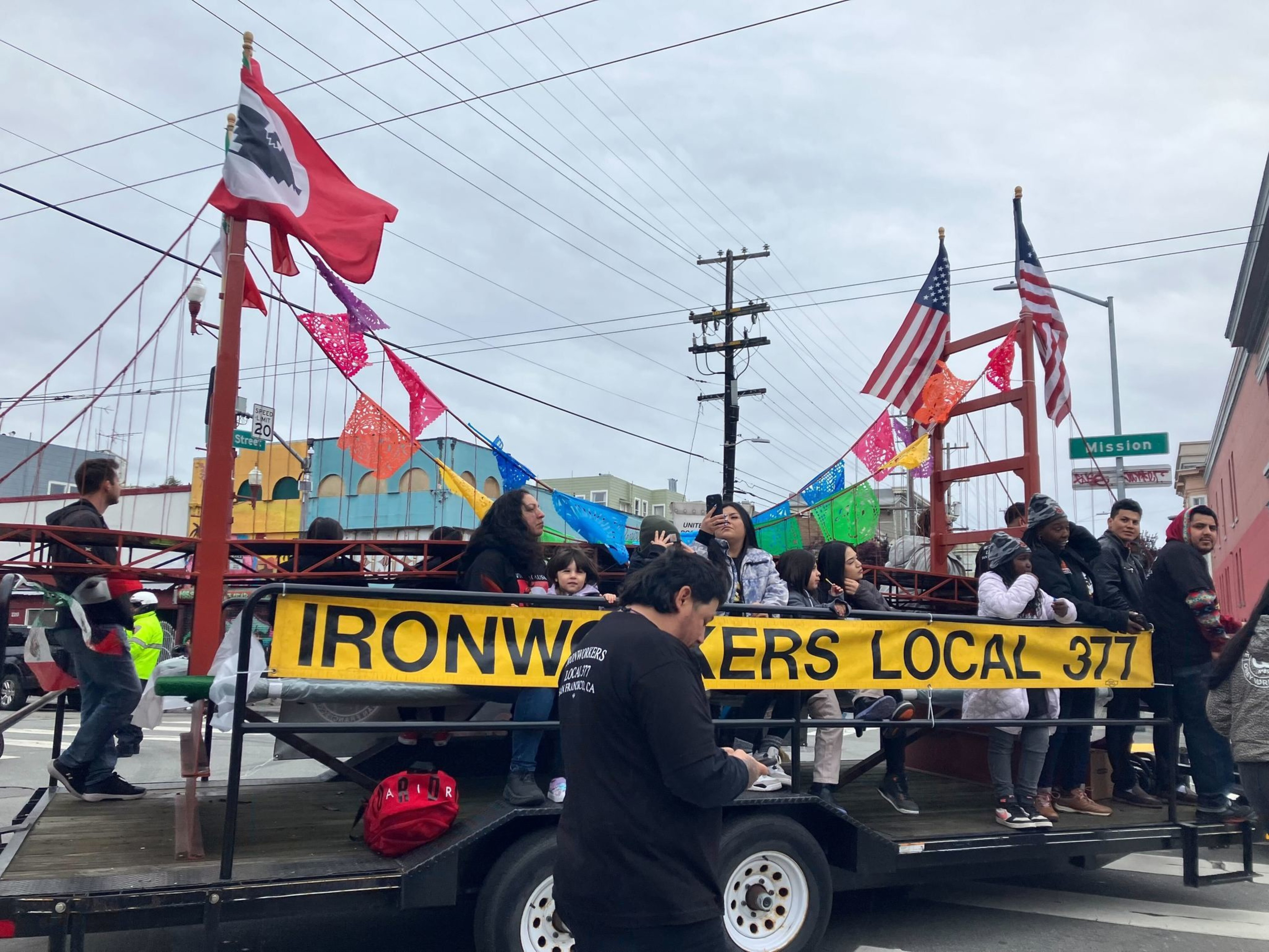Dozens of labor union members, community activists and residents marched through the Mission District during a gusty Saturday to honor the legacy of Cesar Chavez and the United Farm Workers movement.
During the 31st edition of the annual Cesar Chavez Day Parade, marchers chanted the slogan made popular by the labor leader, “Si se puede,” as they took off from Dolores Park and twisted through the Mission, eventually coming to a halt at 24th and Folsom streets.
Ernie Mason, 68, who said he was born and raised in San Francisco, has made it a point to be at the event for the better part of the last three decades—something he says shows how impactful Chavez’s legacy is among the working class who remember his contributions to the labor movement.

“He was a good man who stood up for those who were the most vulnerable,” Mason told The Standard. “It’s important that we keep this tradition alive.”
Various trade unions—which included Ironworkers Local 377 and Carpenters Local Union 22—marched down Mission Street showing solidarity with one another and the legacy of coalition building in San Francisco. Members of San Francisco Lowrider Council were also in attendance, leading the march in lowriders along Mission Street.
Eva Royale, San Francisco regional manager for the United Farm Workers from 1990 to 2002 and an organizer of the parade since its inception, said the annual event serves as a way to educate the next generation about the contributions of Chavez and Dolores Huerta to “La Causa,” or “The Cause” in English.

“Cesar has been gone since he died in 1993,” Royale said. “Unless they are teaching this in school, how are these young people supposed to learn about him? They know they get the day off, but the why is important for them to know as well.”
Although Chavez was not from San Francisco, the city was a haven of support for the farm workers movement, Royale said. San Franciscans overwhelmingly supported the various grape boycotts that aimed to improve their working conditions, banding together in what they called Grape Boycott Committees to spread the word about the labor actions.
Chavez knew how to build coalitions outside of his movement, Royale said, adding that those relationships he built in San Francisco contributed to the success of the boycotts.
“It’s all about working together you are able to accomplish our goals,” she said, adding that Chavez’s message of coalition rings as true in this election year as it did 50 years ago. “We need to turn out the vote—not just those who are already registered. A lot of our people [Latinos] are not registered, so that’s the need before this November.”

